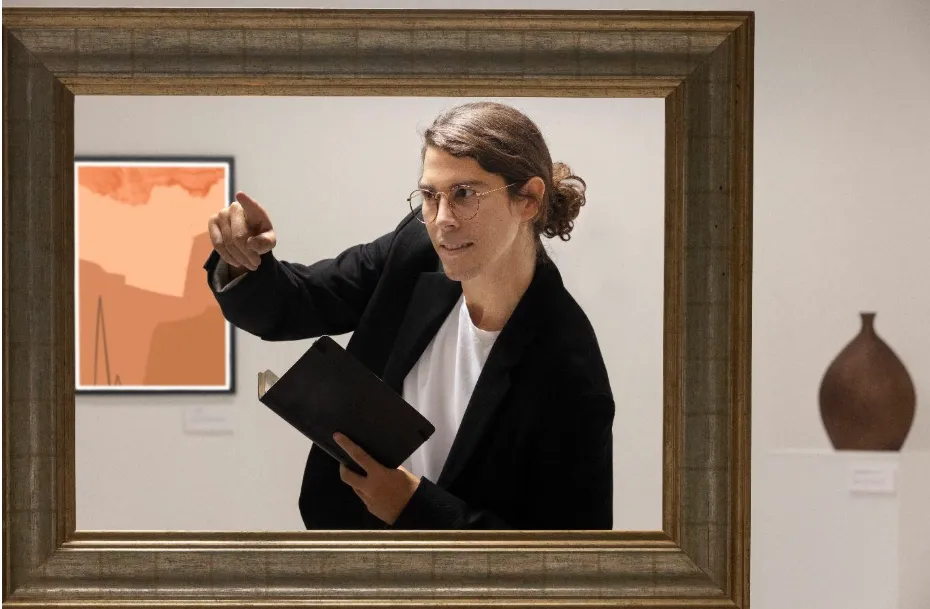Art and Neuroaesthetics: Boost Memory and Brain Power

There are rising concerns over how people’s memory and cognitive activity suffer over time because of excessive reliance on tech and digital tools for things like note-taking and information retrieval. Related problems arise from numerous factors, all very familiar to the bulk of individuals these days, from the poor quality of sleep to heightened stress levels and the overall fast pace of life. While improvements in some aspects, such as the decrease of stress and negative emotions, can help alleviate problems with memory and mental health and functioning, an activity that’s probably to everyone’s liking emerges as a central topic among scientists and health experts: art.
Also Read: Which Electric Longboard Skateboard is Best for Smooth Rides?
Art is being increasingly recognized not just for its cultural value but also for its neurological benefits. As research continues to unfold, the relationship between artistic engagement and brain health is becoming clearer. New findings are emerging that uncover how closely creativity and cognitive health are connected, encouraging people to interact with art more frequently and deeply.
When art and neuroscience overlap
From the outside, science and art might seem like polar opposites that fascinate completely different types of experts and enthusiasts. But the truth is that these two fields often intersect, and in impactful ways. The rising field of neuroaesthetics emphasizes the unique and powerful overlap between the arts and neuroscience. Valuable insights emerge from delving into the connection between art and the brain, showing how the former influences the latter—insights that can be used to promote mental well-being and foster stronger communities.
Neuroaesthetics studies the art’s impact on human physical, emotional, and cognitive health. Engaging in art, whether by observing a painting or hunting for sculptures for sale online, can light up the brain in complex ways. The visual cortex processes form and color, while the hippocampus and amygdala assign emotional weight and memory to those impressions. The interplay of these regions makes certain art pieces feel “moving,” profound, or unforgettable.
How colors, memory, and well-being intersect
Colors elicit strong psychological responses, which is why people rely on highlights to store and access information better. Red and its variations may signal excitement or tension, while blues are known for their soothing effect. These reactions go beyond aesthetic: they’re physiological and formed through cultural context and evolution. The conclusion is that art has always changed feelings, perceptions, and even beliefs.
Importantly, research shows that art can support mental well-being, reduce stress, and even enhance cognitive flexibility. Art therapy, which has gained momentum lately for its potential to improve mental areas, exploits these principles, using visual expression as a tool for healing, emotional release, and personal growth.
When you start understanding the science behind human responses to art, the connection between logic and creativity starts becoming clearer. It’s a key part of how the brain perceives the world. Shortly, experiencing art is both emotional and neurological and offers a rich and deep human connection between mind and meaning.
Frequent encounters with art may be more powerful than you think
While engaging with art in museums or galleries can deliver immediate positive effects, art’s benefits are not limited to artwork-dedicated spaces. Frequent encounters with visual expressions, like home décor, sketching in a notebook, or looking at art online, can also produce cognitive and emotional effects. These small but intentional moments can boost focus, lift mood, and improve self-awareness.
Creating art particularly provides a hands-on path to better mental clarity by allowing you to focus on the presence, which in turn lowers anxiety and can boost self-esteem. You’re practically engaging multiple regions of the brain, a practice encouraged by neuroscientists. Making art stimulates the prefrontal cortex, which handles executive function and emotional regulation, while also activating the brain’s reward system. This explains the sense of calm and satisfaction that’s often sparked by creative activities.
Art as a tool for connection
The general opinion is that meaningful human connections are a bit trickier to forge and sustain these days. Art bridges this gap, whether you’re discussing a painting randomly in a small gallery, or collaborating on murals and art-based projects. Shared art experiences activate mirror neurons, aka the brain cells involved in empathy and understanding others’ emotions, which consequently forge social bonds and nurture a sense of belonging.
You don’t need to physically leave your house in search of a brick-and-mortar establishment to engage with art. Virtual exhibitions, online galleries, and art marketplaces welcome art enthusiasts of all levels and foster dialogue and appreciation across borders. This way, technology and art don’t have to be in conflict: they can complement each other in enriching the human experience.
Designing with the brain in mind
With rising awareness of art’s impact on the brain, architects and designers are starting to focus more on these effects, incorporating neuroaesthetic principles into their work and research. Hospitals and offices are adopting décor with calming colors, meaningful imagery, and natural elements, all of which are shown to support mental health and cognitive performance.
Even the smallest of changes, like choosing a piece of artwork that evokes peace or inspiration, can make a tangible difference in people’s daily well-being. Choices like these go beyond aesthetics: they become functional tools for emotional and cognitive health.
Unlocking long-term benefits
Art goes beyond the immediate pleasure or relaxation felt and into building long-lasting cognitive reserves. Frequent engagement with art, be it by creating or observing, can protect against age-caused memory decline. Artistic activity has been linked to improved memory recall and emotional resilience for older adults and even slower progression of neurodegenerative diseases.
Just as exercise maintains physical health, regular engagement with art could serve as a preventative solution against mental health decline or even a workout for the mind.
Ending thoughts
You don’t need to be a professional artist to benefit from art’s brain-boosting effects – you can do it anywhere, anytime. Whether you’re viewing a captivating artwork or painting and sculpting works of art yourself, you’re doing something powerful for your mind that will benefit you in the long run.






